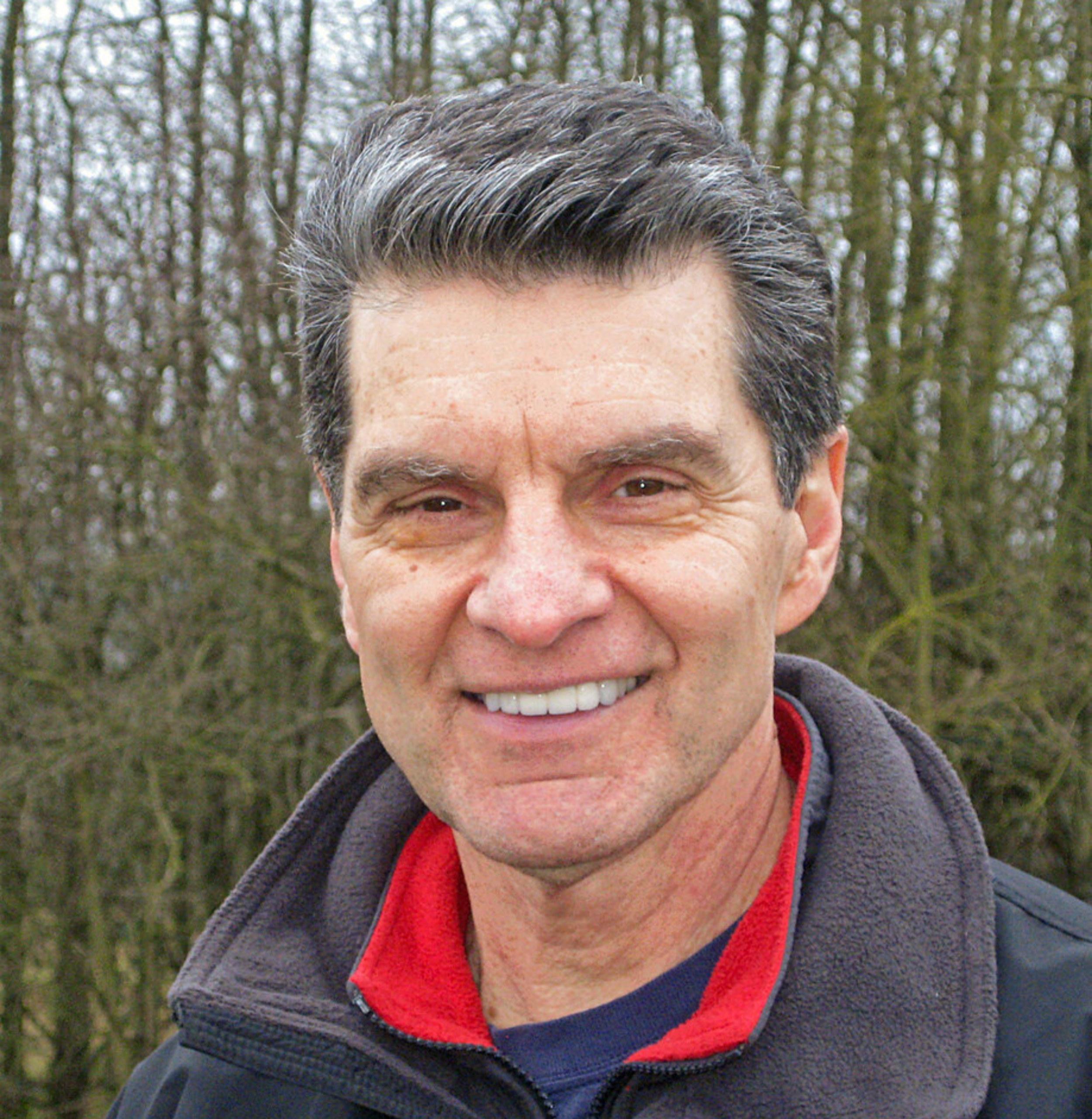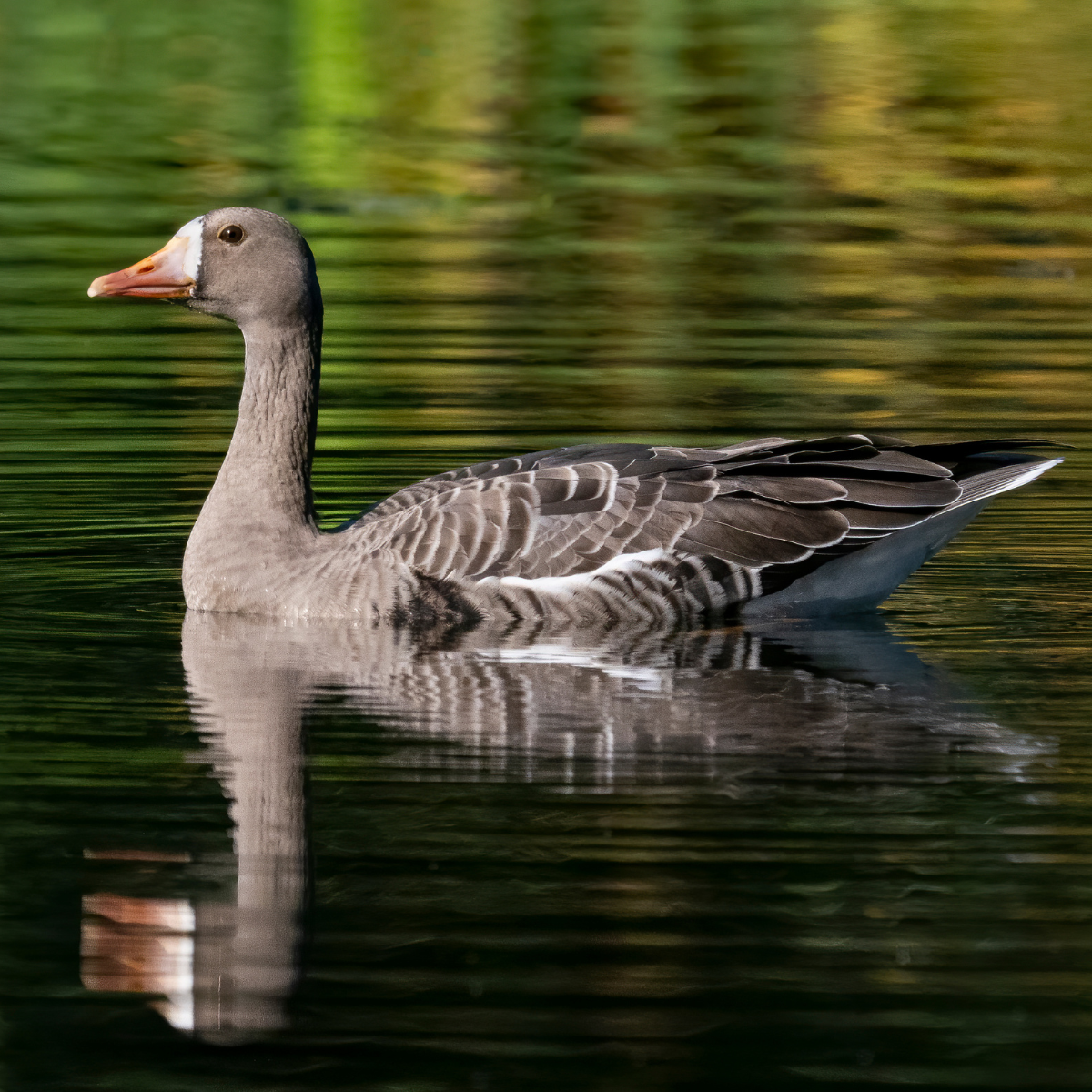Bird of the Month: Greater White-fronted Goose
Written by Andy McCormick
Andy McCormick, Volunteer and Former Board President of Eastside Audubon
Seen along the coast or in small groups inland wintering among other geese, the Greater White-fronted Goose traverses Washington during spring and fall migrations.
This overall brown goose has a white front that is described as a white band around the base of the bill that extends to cover the forehead (Alderfer). This pattern is clear in adults, but juveniles do not begin to exhibit white around the bill until the end of their first winter. The white front also inspired the scientific name albifrons, from the Latin albus, white and frons, forehead or front. The genus name Anser is Latin for goose.
The Greater White-fronted Goose has earned two nicknames. The distinctive wide black bars on the belly inspired hunters to call this bird the “Specklebelly.” These bars can be seen well when an adult goose is in flight, but they are missing in juvenile birds. The call of this goose is a high-pitched laugh-like ho-leeleek (Sibley) and hence it has been called the “Laughing” goose. Photos videos, and vocalizations of the Greater White-fronted Goose can be accessed at The Macaulay Library.
Greater White-fronted Goose
Scientific Name: Anser albifrons
Length: 28”
Wingspan: 53”
Weight: 4.8 lb (2,200 g)
AOU Alpha Code: GWFG
ARCTIC BREEDER
Greater White-fronted Geese, which winter west of the Cascades and Sierra Nevada ranges from Washington to Southern California, arrive on the breeding grounds in the Yukon Territory in early May. These geese prefer nesting near freshwater in marshes and prairie fields and constructing a nest in a shallow depression surrounded by grasses and sedges. Once settled, the female deposits three to six white eggs and incubates them for about three weeks. After hatching, the goslings are precocious and can swim, walk, and feed themselves, and they are attended by both parents until they fledge (Kaufman).
The Yukon is one of several breeding areas in the northern region of North America. One distinctive group of Greater White-fronted Geese nests along the Arctic slope in Alaska and another breeds south to the Gulf of Alaska. The western Alaska breeders winter in the Mississippi Valley. Greenland also hosts nesting White-fronted Geese which cross the Atlantic Ocean to winter in Ireland. Eurasian Greater White-fronted Geese winter in the Netherlands and other European countries, and farther east to China, Japan, and Korea (Ely et al).
Greater White-fronted Goose by Andy McCormick
STATUS AND CONSERVATION
Although Greater White-fronted Geese are worldwide and abundant, they face some challenges along the Pacific Flyway. Machine noise and the risk of oil spills are by-products of expansive oil and gas extraction in the North American and Asian Arctic regions. Shoreline erosion due to climate change and the loss of freshwater marsh habitat resulting from land uses changes have reduced the available wintering habitat for White-fronted Geese. This loss of territory has necessitated a move by the geese to agricultural land during winter. Continued rapid expansion of the Snow Goose population also brings a risk to other waterfowl by reducing the amount of available food for Greater White-fronted Geese (Ely et al). Both of these goose species eat the tubers of aquatic plants. Continued worldwide hunting of Greater White-fronted Geese is another control on the species’ population.
THE “TULE GOOSE” AND LESSER WHITE-FRONTED GOOSE
The “Tule” subspecies (A. a. elgasi) of Greater White-fronted Goose is a larger and darker bird with a longer neck and deeper bill. It breeds in the Cook Inlet of Alaska and winters in the Central Valley of California. It spends its time in marshes rooting out tubers of tule (Schoenoplectus acutus), a bullrush common in Western North America. Lesser White-fronted Goose (A. erythropus) is a smaller species that closely resembles the Greater version. However, it is a Eurasian goose that has made only rare North American appearances on islands near Alaska.
Photo credit: Mick Thompson.
References available upon request from amccormick@eastsideaudubon.org.




